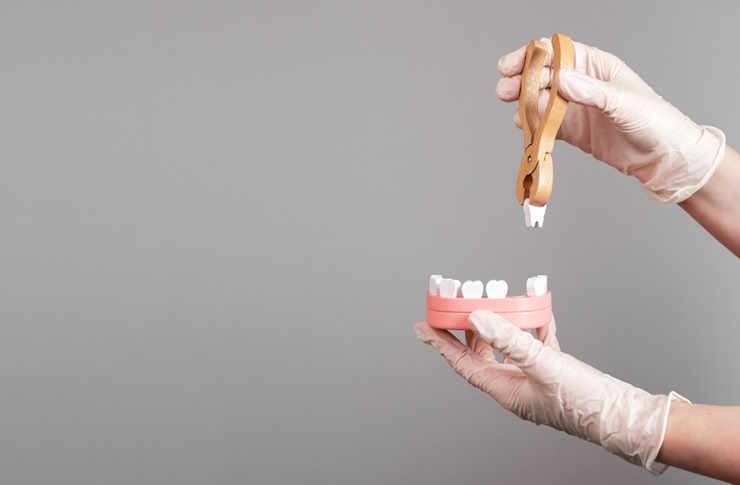Understanding Dental Implants: Options and Procedures Explained
Dental implants have become a cornerstone of modern restorative dentistry, offering durable solutions for missing teeth across all age groups. Whether you're considering implants for a teenager, exploring same-day procedures, or researching the step-by-step process involved, understanding your options is essential. This guide breaks down the key aspects of dental implant treatment, helping you make informed decisions about your oral health.

Missing teeth can affect more than just your smile—they impact chewing function, speech, and even self-confidence. Dental implants provide a long-term solution that mimics natural teeth in both appearance and function. From traditional multi-stage procedures to innovative same-day options, the field of implant dentistry continues to evolve, offering patients more choices than ever before.
Can Teenagers Receive Dental Implants?
The question of dental implants for teenagers requires careful consideration. Unlike adults, teenagers are still experiencing jaw growth and development, which typically continues into the late teens or early twenties. Most dental professionals recommend waiting until facial bone growth is complete before placing permanent implants, usually around age 18 for females and age 21 for males. However, exceptions exist for specific medical conditions or trauma cases where tooth loss significantly impacts function or psychological well-being. In such situations, orthodontists and oral surgeons may work together to develop interim solutions, such as temporary bridges or removable prosthetics, until the patient reaches an appropriate age for permanent implant placement. A thorough evaluation including X-rays and growth assessments helps determine the best timing for each individual case.
What Does the Dental Implant Procedure Involve?
The dental implant procedure typically unfolds in several carefully planned stages. Initially, your dentist or oral surgeon conducts a comprehensive examination, including 3D imaging to assess bone density and structure. During the surgical phase, a titanium post is inserted into the jawbone beneath the gum line, serving as an artificial tooth root. This post requires a healing period of three to six months, during which osseointegration occurs—the process where bone fuses with the implant surface. Once integration is complete, an abutment (connector piece) is attached to the post, followed by the placement of a custom-made crown that matches your natural teeth. Throughout this process, patients receive local anaesthesia or sedation options to ensure comfort. Some cases may require preliminary procedures such as bone grafting if insufficient bone volume exists, which extends the overall timeline but improves long-term success rates.
Are Same-Day Dental Implants a Viable Option?
Same-day dental implants, also known as immediate load implants, represent an advancement that allows patients to receive temporary teeth on the same day as implant placement. This approach works best for patients with adequate bone density and no active gum disease. During a single appointment, the surgeon places the implant and attaches a temporary crown or bridge, providing immediate functionality and aesthetics. However, these temporary restorations require careful use—patients must avoid hard or sticky foods and follow strict oral hygiene protocols during the healing phase. After osseointegration completes, the temporary restoration is replaced with a permanent one. Not everyone qualifies for same-day implants; factors such as smoking, diabetes, or insufficient bone quality may necessitate the traditional staged approach. A thorough consultation with an experienced implant specialist determines candidacy and helps set realistic expectations about treatment duration and outcomes.
Understanding Cost Considerations for Dental Implants
Dental implant costs vary significantly based on multiple factors including the number of implants needed, preliminary procedures required, geographic location, and the expertise of the practitioner. In Australia, a single dental implant typically ranges from $3,000 to $6,500, though complex cases requiring bone grafting or sinus lifts may exceed $10,000. Many dental practices offer payment plans or financing options to make treatment more accessible. Private health insurance coverage for implants varies considerably between policies, with some offering partial rebates for surgical components while excluding prosthetic costs. It’s worth noting that while initial expenses may seem substantial, dental implants often prove more cost-effective over time compared to alternatives like bridges or dentures, which require periodic replacement and maintenance.
| Service Component | Typical Cost Range (AUD) | Notes |
|---|---|---|
| Single Implant with Crown | $3,000 - $6,500 | Includes post, abutment, and crown |
| Bone Grafting | $500 - $3,000 | If additional bone support needed |
| Full Arch Restoration | $15,000 - $35,000 | Multiple implants supporting full denture |
| Same-Day Implant Procedure | $3,500 - $7,000 | Premium for immediate loading |
Prices, rates, or cost estimates mentioned in this article are based on the latest available information but may change over time. Independent research is advised before making financial decisions.
Choosing the Right Provider for Your Implant Treatment
Selecting a qualified dental professional for implant treatment requires research and careful evaluation. Look for practitioners with specialized training in implant dentistry, such as oral surgeons, periodontists, or prosthodontists with extensive implant experience. Many dental practices now offer comprehensive implant services, combining surgical expertise with restorative capabilities under one roof. When evaluating providers in your area, consider factors such as years of experience, success rates, technology used (such as 3D imaging and guided surgery systems), and patient reviews. Schedule consultations with multiple practitioners to compare treatment plans, costs, and communication styles. A reputable provider will conduct thorough examinations, discuss all available options including alternatives to implants, and provide realistic timelines and success expectations. Don’t hesitate to ask about the specific implant systems they use, as established brands with long-term research backing tend to offer better predictability and warranty support.
Maintaining Your Dental Implants for Long-Term Success
Once your dental implants are in place, proper maintenance ensures their longevity. While implants cannot develop cavities like natural teeth, the surrounding gum tissue remains susceptible to infection and inflammation. Daily brushing and flossing, particularly around the implant-gum interface, prevents peri-implantitis—a condition similar to gum disease that can compromise implant stability. Regular dental check-ups every six months allow your dentist to monitor implant health, check for proper bite alignment, and perform professional cleaning. Avoid habits that stress implants, such as chewing ice, opening packages with your teeth, or grinding your teeth at night without a protective guard. With proper care, dental implants can last decades or even a lifetime, making them one of the most durable tooth replacement options available. Most manufacturers offer warranties on implant components, and many dental practices provide guarantees on their surgical work, adding an extra layer of security to your investment.
This article is for informational purposes only and should not be considered medical advice. Please consult a qualified healthcare professional for personalized guidance and treatment.




